Ranging - Part 1
This is the first in a series of blogs about ranging, a powerful yet simple technique that you can use in all kinds of sailing situations. This was prompted by sailing with another Senior in the Senior Area, and his asking “so where exactly is the west boundary of the Senior area”. Here’s the map.

But how do you know where you are relative to that when you’re on the water?
I’ll answer that question, but first I’ll discuss what ranging is and give a simple example of its use.
What is Ranging?
Ranging is a technique useful in all types of boating to determine whether you are sailing a straight course over ground or are being pushed one way or another (by leeway, current, or whatever). It is also useful to tell you whether your current course will allow you to clear an object (get through the gap in the Berkeley Pier, say). I've used it a lot in kayaking. You can also use it in a more complicated way to see if you are on a given line (like the Senior Area west boundary). And, contrary to popular belief, you cannot use it accurately to determine whether you’re on a collision corse with another vessel. More on that later.
The easiest example of using ranging is crossing a channel with current pushing you sideways, say going to Angel Island from Berkeley. You want to to across the current to a target location.
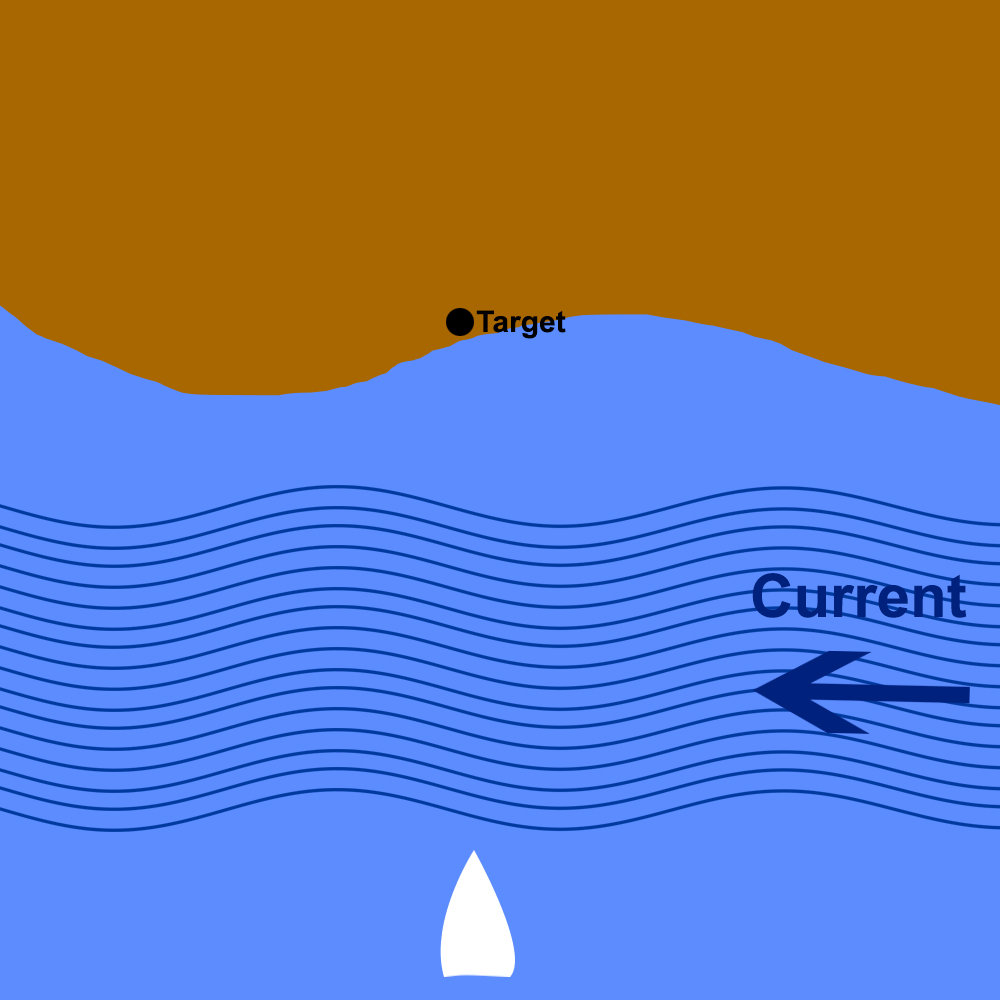
But pointing the boat straight to the target will just push you sideways:
You can't just keep pointing the boat at your target, as you will get pushed sideways and have to point more and more up-current. If you're lucky, you'll get there on this track, constantly changing your course up-current to point at the target:
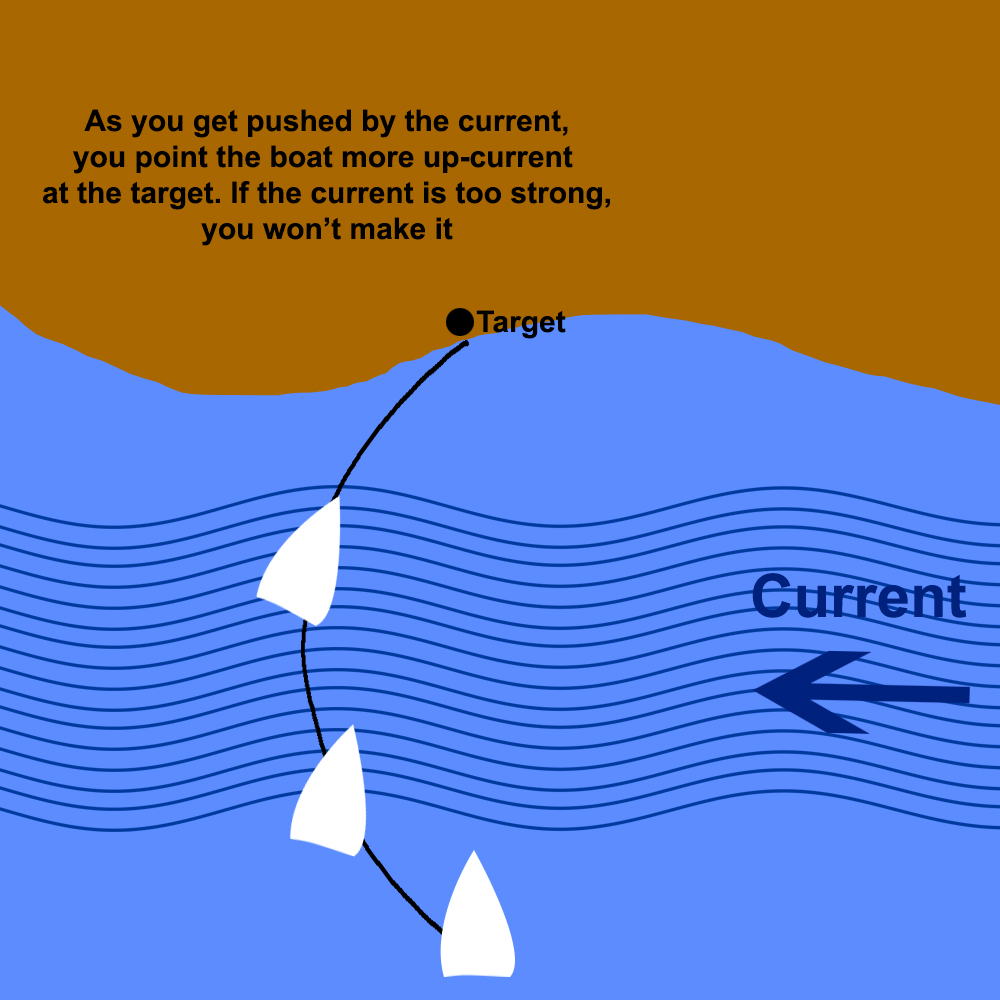
More likely, in strong current, you won't make it. So you'll have to "crab" the boat by pointing it into the current enough to track a straight line across it, like this:
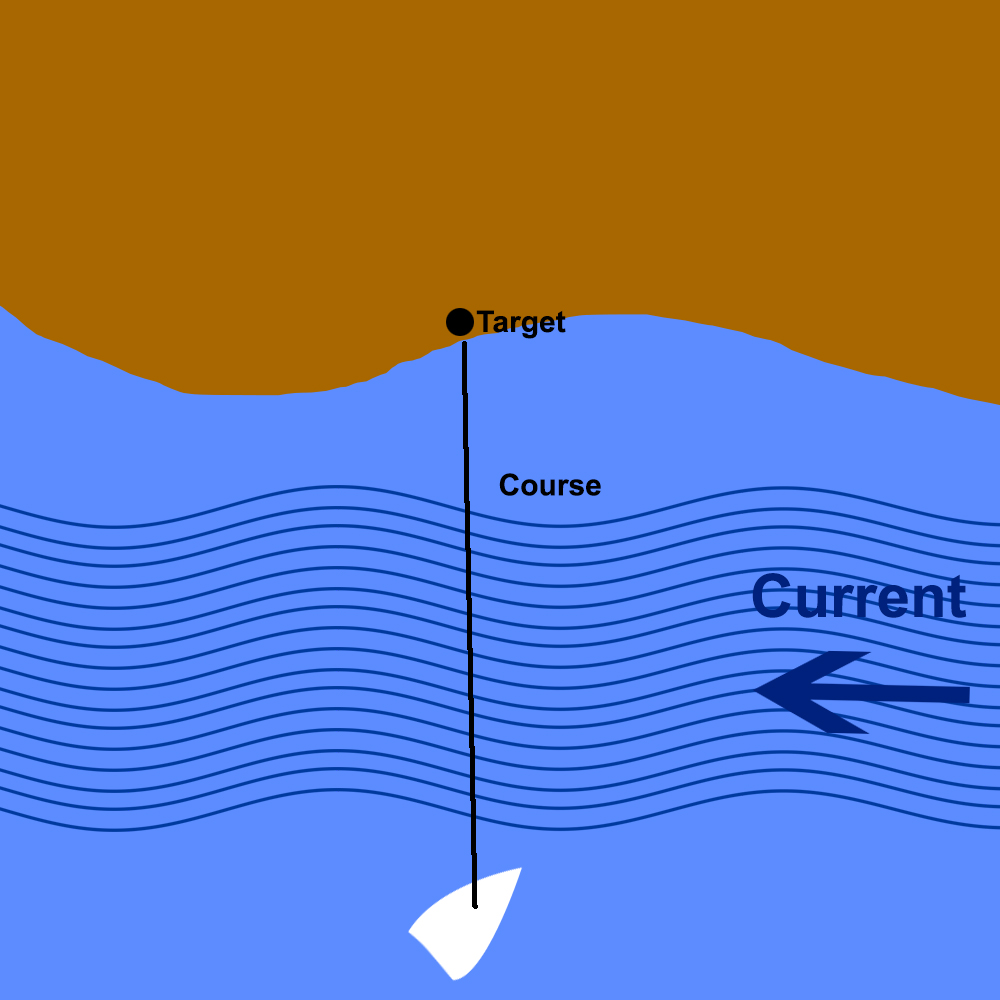
But how do you know how much to crab the boat to achieve this? That's where ranges come in. You pick two (non-moving) objects, one where you want to go and the other quite a bit behind it but lined up with it. You will be on a straight line across the current if they remain lined up, one behind the other:
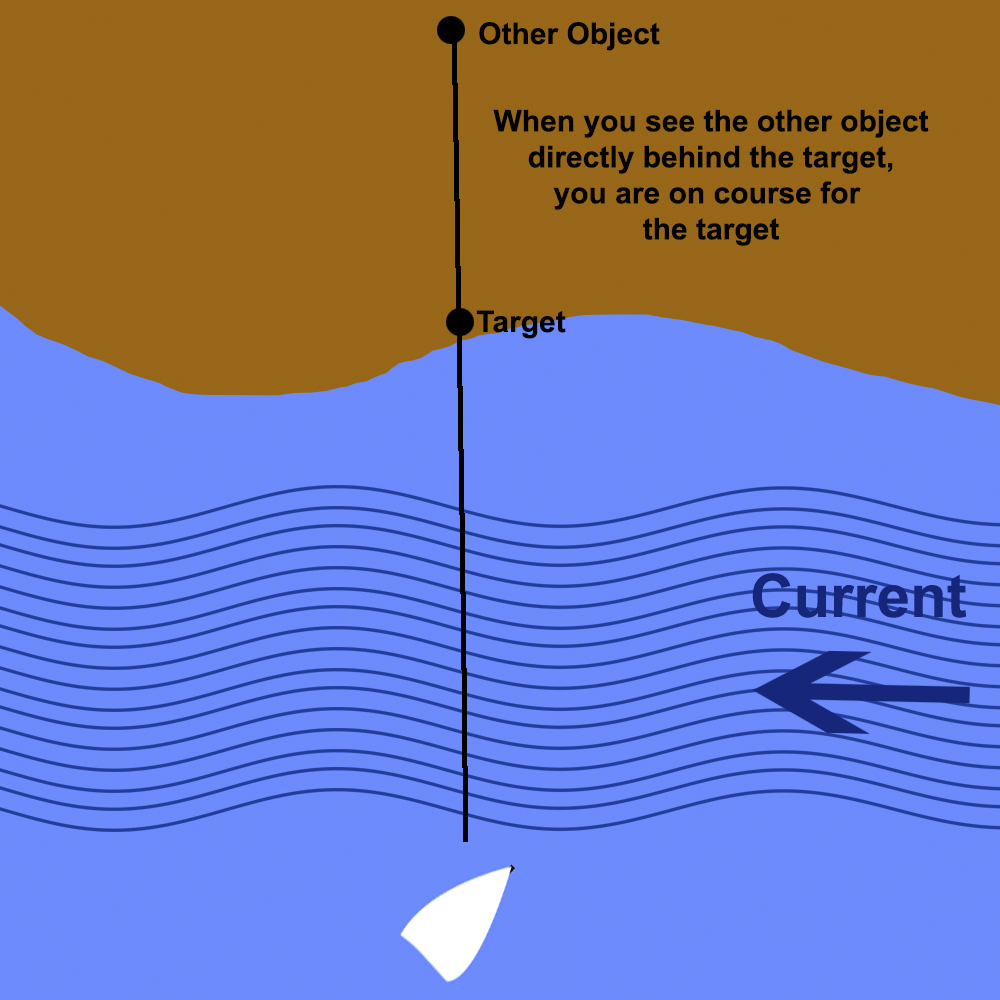
Your job in steering the course is to keep the two objects lined up. If you do that, you will be on a straight-line course for the target.
When you get off course, the back object moves to one side or the other, and that tells you which side of your intended course you're on. If it moves to the right, you're to the right of your course:
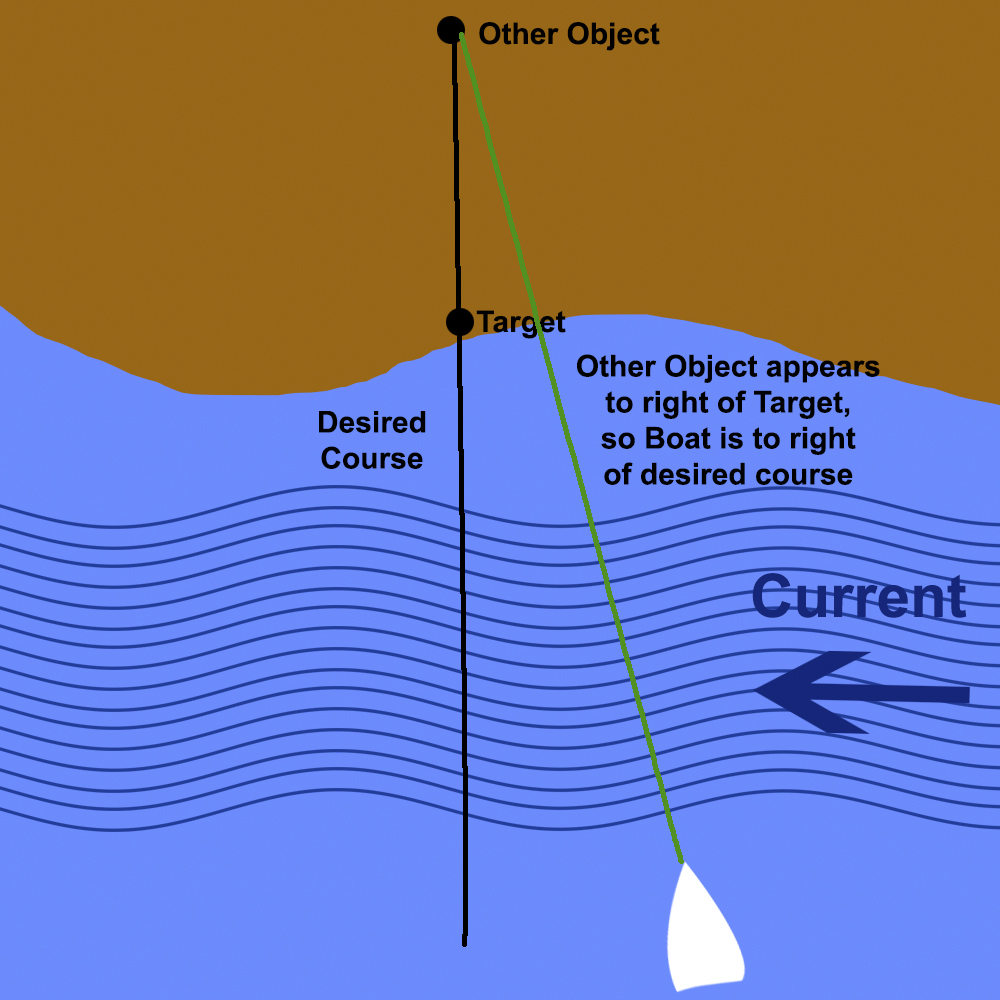
And if it moves to the left, you're to the left of your course:
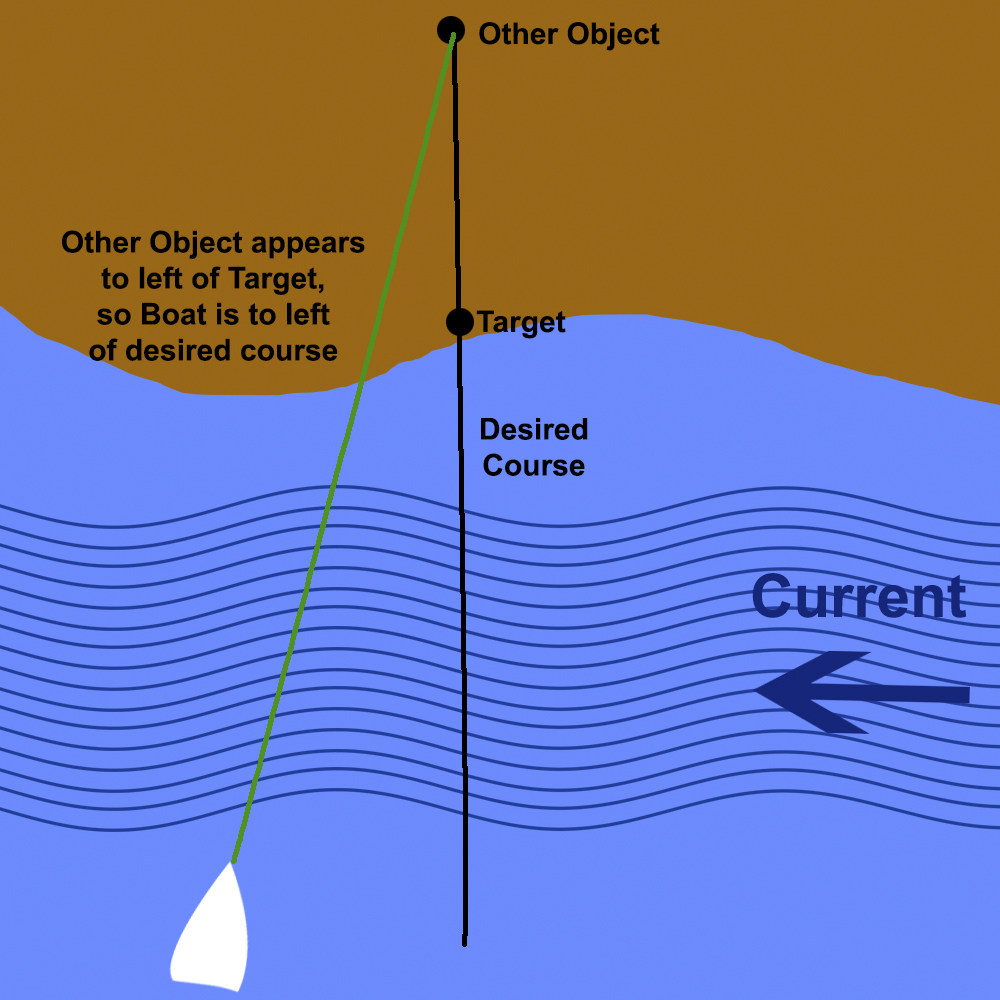
Watch the range, adjust your course as you see the back object move, trying to keep it behind your target.
Simple, no fancy tools, no electronics, just what you’re seeing.
Next will be using the same technique in more common situations, like telling you whether you’re going to clear an obstacle on your present course, or whether you’re going to make a docking.
When you subscribe to the blog, we will send you an e-mail when there are new updates on the site so you wouldn't miss them.



Comments 2
So in your example,, with the Current pushing left,, why not stay to the right , knowing you can relax your
crab,, and the current will bring you inline? easier than trying to make up pushing against the current later if you slip down?
If you're saying make a crossing so far to the right that you know you will get across to the right of your target, then just float down, that will work in this example (if you can judge how far to the right to cross).
If we complicate the example a bit, it will not work. There are cases where you have to stay in a straight line to the target because of obstacles on the right. Then you will not be able to do what you suggest.